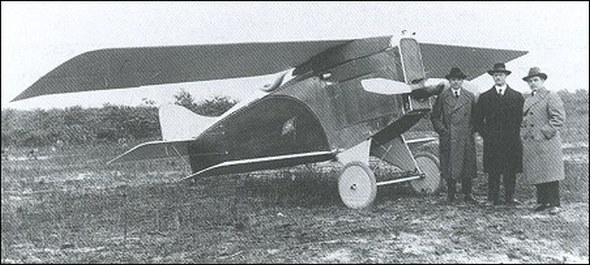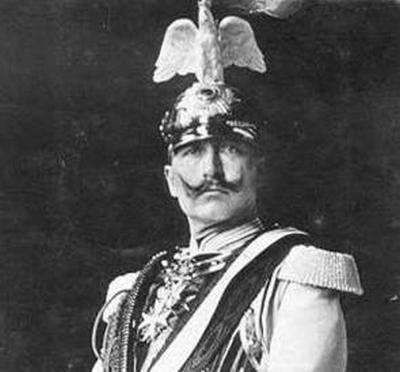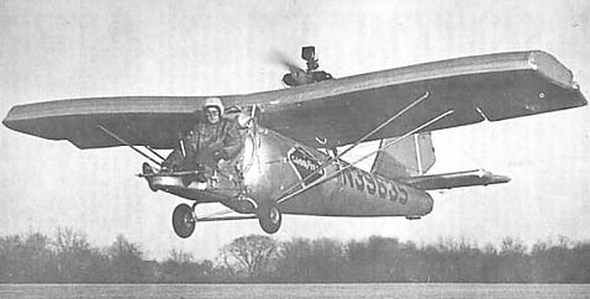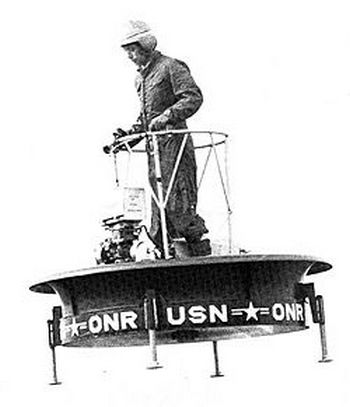When you really think about it, the ability to fly is pretty much the most mind blowing experience a human being can ever hope for. Think about it: you’re defying gravity. Yet we still find time to complain about it whenever possible. The ways we fly are constantly improving to combat our ever growing boredom with living the impossible dream. However, some ideas are more awesome than others, and those ideas tend to fall flat on their face.
1.
The Christmas Bullet
Named after the jolliest murder weapon in history, this number was designed by Dr. William Christmas. Judging by his track record, Dr. Christmas had no business being anywhere near something that could potentially fly. His first few attempts into the world of aviation design ended in disaster, and that was before he founded his airplane sales company in 1910. In his defense, everyone else was doing the whole “aircraft thing” at the time. It was 1910’s equivalent to Evony.

Though he was able to secure funding for his project on the basis that his planes would be a necessity to kidnap the Kaiser, that’s where Dr. Christmas’s clever thinking comes to a grinding halt. When it actually came to constructing the Christmas Bullet he had a simple idea: scout plane. However, he knew nothing about aerodynamics (as evidenced by all of those crashes in his early career, which I’m assuming no one bothered to look into). He worried his coworkers when he built the prototype out of scrap wood and metal, actively refusing the industry standard materials of the day. He further worried said coworkers when he denied the usefulness of wing struts, instead insisting that craft should have flexible wings. The maiden voyage ended with the test pilot pulling a Dale Earnhardt. Now with a fatal crash under his belt, Dr. Christmas built a second version, which amounted to little more than another crashed plane and second corpsed pilot. The Christmas Bullet never saw use by the U.S. Military and the Kaiser lived the rest of his days without fearing abduction via a tiny plane.

Still at large.
2.
Goodyear Inflatoplane
From the people that brought you tires comes the inflatable plane. The premise was simple enough: a plane that could be quickly inflated into form and easily transported for use wherever necessary. Having already made that awesome blimp that everyone loves, Goodyear was more than capable of making such a device real and the project was underway in 1956. The U.S. Army sponsored the project, seeing the inflatoplane as a means to help soldiers behind enemy lines or to help Solid Snake escape from Shadow Moses.
The inflatoplane project was completed in twelve weeks. The final prototype was four feet high, nineteen feet long and sported a wingspan of twenty-eight feet. Able to inflate both quickly and easily, the craft was capable of reaching a delightful cruise speed of seventy miles per hour. Twelve inflatoplanes were built between 1955 and 1962 before the Army came the the startling realization that an escape plane that’s prone to deflation at the hands of stray bullets, shrapnel, birds in flight and a gentle breeze was probably not the best means to rescue those in dire need.

3.
Hiller VZ-1
Those in the aviation field who want to achieve flight but are okay with settling may take a shine to hovering. Rather than reach into the heavens and yank the very beard of Zues, hovering allows man to travel a couple of inches off of the ground without having to really move at all, utilizing air cushions to travel above various forms of terrain including ice and water. It also adds a certain level of mystique to you and your terrorist organization.
Naturally, the Army would want to employ use of hovercrafts to combat the growing Cobra menace and funded Hiller Aircraft Group to design a unique model in 1953. The eventual Hiller VZ-1 allowed a single pilot to stand on a platform lifted off the ground by a ducted fan. Once in the air the pilot could direct the VZ-1 by shifting their body weight around. A larger variation was also built which was guided with controls similar to those of a helicopter. The end product was surprisingly stable considering the unorthodox control scheme. However, the HZ-1 was dropped by the army for numerous reasons, chief among them that it wasn’t up to par as a combat vehicle. Who knew?

Answer: Everyone.
Ignoring the fact that this thing leaves anyone piloting it open to gunfire from every angle, the craft could only achieve a maximum speed of sixteen miles per hour. On top of that, the “combat vehicle” relied entirely on the pilot’s weapons to engage the enemy, meaning some poor soul had to play the human game of Topple while trying to properly aim a gun before the enemy noticed the giant fan slowly coming their way.

To the skiesssssss!







